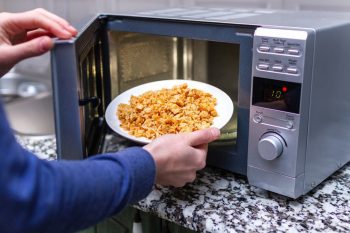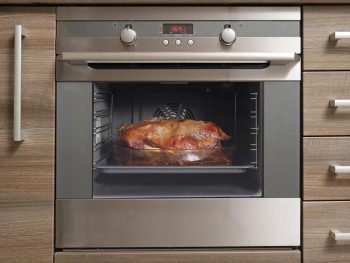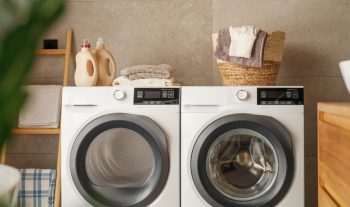
When it comes to air conditioning, many homeowners often ask, “How low can I set my AC?” The answer is not as straightforward as one might think. Several factors come into play, such as the efficiency and longevity of your AC unit, the outdoor temperature and humidity levels, and even potential health risks. This comprehensive guide will help you understand all these factors and determine the optimal AC temperature for your home.
The lowest recommended temperature for most residential air conditioning units is around 60°F, however, it’s generally advised not to set your AC below 68°F to prevent issues like the evaporator coil freezing. The ideal temperature range for comfort and energy efficiency is usually between 75 to 78 degrees. But remember, setting the right AC temperature is a balance of personal comfort, energy efficiency, and maintaining the longevity of your AC unit.
The Lowest Recommended Temperature for AC Units
Most residential air conditioning units have a minimum thermostat setting of around 60°F, but it’s generally recommended not to set your AC below 68°F. This is because setting the thermostat below this temperature can lead to issues like the evaporator coil freezing, which can render the air conditioner inoperable until it defrosts. The ideal temperature range for comfort and energy efficiency typically lies between 75 to 78 degrees.
The Impact of Extremely Low Temperatures on Your AC
Setting your AC to extremely low temperatures can negatively impact its efficiency and longevity. When you set the temperature lower, the AC has to work harder, leading to higher cooling costs and increased energy consumption. A study estimates that reducing the AC temperature by one degree in summer can increase energy consumption by 10%. Moreover, if the temperature is set to a lower level, the compressor will work longer, leading to more wear and tear on the system and higher utility bills.
Balancing Energy Efficiency and Comfort
Finding the balance between energy efficiency and comfort when setting your AC temperature can be a bit of a challenge. The U.S. Department of Energy recommends setting the thermostat to 78°F during summer days for a balance between comfort and energy savings. However, personal preferences and priorities may vary, so finding the right balance between comfort and energy savings is essential.
The Effect of Outdoor Temperatures and Humidity Levels
Outdoor temperatures and humidity levels can significantly impact your AC settings and performance. When outdoor temperatures are high, the AC unit has to work harder to produce cool air and regulate indoor temperature, which can lower the system’s efficiency and cause it to break down. High humidity levels can also affect the performance of an AC unit, causing it to work overtime to generate cool air, resulting in increased strain on the cooling device.
Potential Health Risks of Setting AC Too Low
Setting the air conditioning too low can lead to several potential health risks, including dry eyes, respiratory problems, cold-related illnesses, allergic symptoms, and aggravation of existing health conditions. The World Health Organization recommends maintaining indoor temperatures of at least 18°C (64°F) to avoid many of the health risks associated with cold homes.
The Benefits of Programmable Thermostats and Smart AC Systems
Programmable thermostats and smart AC systems can help maintain optimal temperature settings by offering energy savings, convenience, consistent temperature control, increased efficiency, reduced carbon footprint, and compatibility with smart home systems.
Determining the Optimal AC Temperature for Your Home
Determining the optimal AC temperature for your home involves considering factors such as personal comfort, energy efficiency, and cost savings. The recommended AC temperature for summer days is 78°F (25°C) when you are at home and awake. However, this temperature may vary depending on personal preferences and other factors such as geographic location, humidity levels, and the number of people in the home.
In conclusion, setting the right AC temperature is a balance of personal comfort, energy efficiency, and maintaining the longevity of your AC unit. By considering the factors mentioned above and making necessary adjustments, you can enjoy a cool and comfortable home environment without worrying about high energy bills or potential health risks.
Frequently Asked Questions
What is the relationship between humidity and air conditioning efficiency?
High humidity levels can make the air feel warmer than it actually is. This can cause your air conditioning unit to work harder, as it tries to cool down the air and remove the excess moisture. This can reduce the efficiency of your AC and increase your energy costs.
How can I reduce my AC usage without compromising comfort?
There are several ways to reduce AC usage without compromising comfort. These include using ceiling fans to circulate air, closing blinds and curtains to block out the sun, and sealing any cracks or leaks in your home’s windows and doors. Additionally, wearing light, breathable clothing can help you feel cooler without relying heavily on the AC.
How often should I service my AC unit to maintain its efficiency and longevity?
It’s generally recommended to service your AC unit at least once a year, ideally in the spring before the peak cooling season starts. Regular maintenance can help ensure your AC operates at peak efficiency, extend its lifespan, and prevent costly repairs.
Why does setting the AC to a lower temperature increase energy consumption?
Setting the AC to a lower temperature means the system has to work harder to reach and maintain that temperature. This requires more energy, leading to higher energy consumption and, consequently, higher energy bills.
What are the benefits of a programmable thermostat?
A programmable thermostat allows you to set different temperatures for different times of the day. This means you can set your AC to a higher temperature when you’re not at home, and to a cooler temperature just before you return. This can help save energy and reduce your cooling costs. Additionally, many programmable thermostats are “smart” and can be controlled remotely through a smartphone app, offering even greater convenience and control over your home’s cooling systems.












